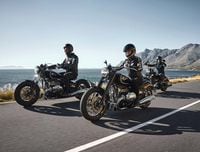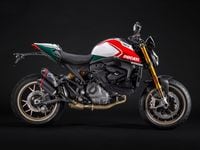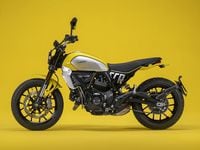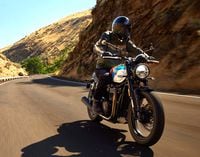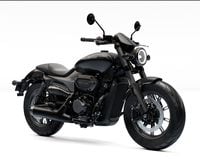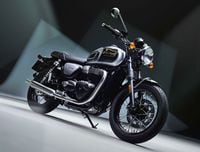Another EICMA, another opportunity missed? Seems so. We were longing for—expecting, even—a true unveil of BMW’s new R 18 cruiser in production form at last month’s show, but what we got was the Concept R 18/2. That makes two customs and two prototypes we’ve seen thus far over a long span of time, but no solid production bike just yet. But Motorrad has given us something we’ve been craving to this point anyway—technical details on that new R 18 Big Boxer engine at the heart of it all.
The generalities have been discussed to death at this point; an 1,800cc flat-twin with horizontally opposed cylinders and air-/oil-cooling, overhead valves actuated by pushrods and an exposed shaft drive, but that was pretty much it. Now we’ve got some more specifics: Actual displacement is a reported 1,802cc, coming from a 107.1mm bore and 100mm stroke, with a compression ratio of 9.6:1. Further, BMW tells us the new engine outputs 91 hp (67kW) at 4,750 rpm, with a claimed peak torque of 116.5 pound-feet coming at 3,000 rpm. Nice.
Related: BMW Unveils Concept R18 Motorcycle
A classic look forms the basis of the ginormous new mill, not just outwardly but also technically as BMW has looked to reference traditional boxer engines from the past. You’ll see it in the OHV layout along with the separate engine and transmission housing—the same features found on the first BMW Motorrad boxer (which had laterally controlled valves). BMW says it’s the “highest-capacity twin-cylinder boxer engine ever used in motorcycle series production,” and with more than 110 pound-feet (150 Nm) of torque available from 2,000 to 4,000 rpm, you’re guaranteed some impressive pulling power. Paired with that generous flywheel mass, BMW says it’ll be exceptionally smooth as well. The specs also give a top engine speed of 5,750 rpm and the big twin is said to idle at 950 rpm.
Related: First Look At BMW’s R18/2 Concept
Beyond that, we’ve already seen that the Big Boxer has large ribbed cylinders and cylinder heads, and is housed in vertically split aluminum cases. But we’ve also discovered it weighs 242 pounds, which includes the gearbox and intake system, and unlike the classic air-cooled two-valve boxer engines from BMW, the Big Boxer crankshaft has an additional main bearing at the center to tamp down undesirable bending vibrations to the shaft.
Like the crankshaft, the two tempered steel connecting rods are mounted on plain bearings, accommodating cast aluminum pistons with two compression rings, and an oil wiper ring. The running surface of the metal cylinders is coated with Nikasil, and the lubricating and cooling oil is supplied by a wet-sump lubrication system with a two-stage oil pump.
Although the new R 18 engine has a modern dual-ignition and combustion chamber, intake manifold injection, and the BMS-O engine management system to deal with the massive torque as well as tempering emissions (it’s Euro 5 compliant), it uses classic OHV configuration for its valve drive, in keeping with BMW’s Heritage concept for this series. The two-cylinder engines of the R 5/R 51 and R 51/2 were the inspiration here, the latter having been the first BMW motorcycle with a boxer engine produced after World War II. Unlike other BMW OHV designs, this mill has two camshafts driven by the crankshaft via a sleeve-type chain.
As in those older engines, the Big Boxer’s two camshafts are also placed to the left and above the crankshaft, to allow for shorter pushrods. That makes for reduced moving masses for a generally stiffer valve drive with improved control and higher speed stability.
As in most BMW Motorrad boxer engines (for years now), a single-disc dry clutch transmits torque from the engine to the transmission, but for the first time it’s a self-reinforcing, anti-hopping clutch, meant to eliminate rear wheel drag caused by hard downshifting. The constant-mesh six-speed transmission lives in a dual-section aluminum housing, and is designed as a four-shaft transmission with helical gear pairs. The gearbox input shaft with lug dampers drives the two gearbox shafts with the gear wheel pairs. An output shaft is provided to bridge the distance, and reverse the direction of rotation. BMW also says a reverse gear is available as an optional extra.
With all this new info on tap, does this mean we’re getting close to seeing a full model reveal? It sure looks that way.










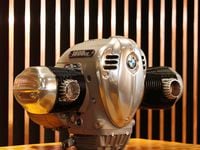
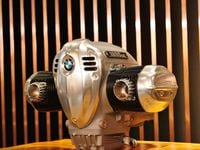
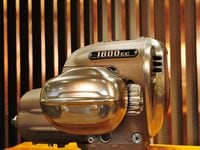
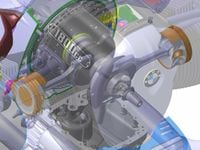
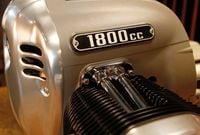
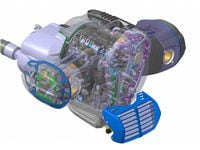
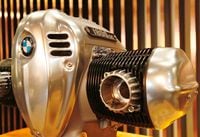
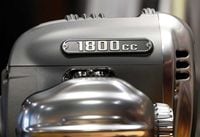
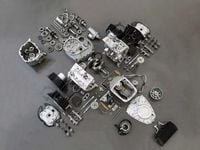
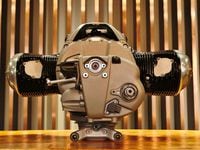
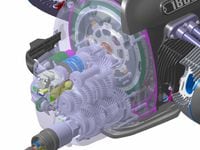
/cloudfront-us-east-1.images.arcpublishing.com/octane/H6Z2IC7WYRBXZNQS4MI3SZ5KPQ.jpg)
/cloudfront-us-east-1.images.arcpublishing.com/octane/IWO5T5PBT5E4HFQ5GK47H5YXR4.jpg)
/cloudfront-us-east-1.images.arcpublishing.com/octane/OQVCJOABCFC5NBEF2KIGRCV3XA.jpg)
/cloudfront-us-east-1.images.arcpublishing.com/octane/F3O2DGLA4ZBDJGNVV6T2IUTWK4.jpg)
/cloudfront-us-east-1.images.arcpublishing.com/octane/ZXYQE3MHLFDSPKNGWL7ER5WJ4U.jpg)
/cloudfront-us-east-1.images.arcpublishing.com/octane/RDF24VM7WVCOBPIR3V3R4KS63U.jpg)
/cloudfront-us-east-1.images.arcpublishing.com/octane/W7RSIBFISNHJLIJESSWTEBTZRQ.jpg)
/cloudfront-us-east-1.images.arcpublishing.com/octane/AERA26ENRNBW3K324YWCPEXYKM.jpg)
/cloudfront-us-east-1.images.arcpublishing.com/octane/YWX3YX7QBBHFXFDMEEEKRG4XJE.jpg)
/cloudfront-us-east-1.images.arcpublishing.com/octane/I7OKI53SZNDOBD2QPXV5VW4AR4.jpg)
/cloudfront-us-east-1.images.arcpublishing.com/octane/IH52EK3ZYZEDRD3HI3QAYOQOQY.jpg)
/cloudfront-us-east-1.images.arcpublishing.com/octane/K2FSAN7OWNAXRJBY32DMVINA44.jpg)
/cloudfront-us-east-1.images.arcpublishing.com/octane/G4XK7JL24FCUTKLZWUFVXOSOGE.jpg)
/cloudfront-us-east-1.images.arcpublishing.com/octane/JJNXVAC27ZCDDCMTHTQZTHO55Y.jpg)
